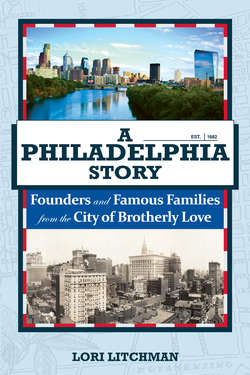Читать книгу A Philadelphia Story - Lori Litchman - Страница 10
На сайте Литреса книга снята с продажи.
Brotherly Love
ОглавлениеEVEN THOUGH THE KING GAVE PENN THE LAND that became Pennsylvania, Penn was fully aware that native peoples had long been living there. He believed that he needed to pay the local Lenni Lenape tribe what he thought was a fair price for the land. Legend has it that in 1682, Penn paid the natives 1,200 pounds and signed a treaty with them under an elm tree at Shackamaxon, which is in the current neighborhood of Kensington. Rather than trying to forcefully take property, Penn decided to purchase a large riverfront parcel from the Swedes.
Penn chose not to have a military presence in Pennsylvania, which was quite uncommon for settlements at the time. He also refused to build a wall around his new city, instead wanting to befriend the native people. He even created a trial system so that if any European committed a crime against a native person, he/she would have a trial before an equal number of Europeans and native people.
In the Spirit: Religious Life
PENN’S UTOPIAN SOCIETY, which guaranteed freedom of religion, did not have the same connotation of freedom that most people think of today: Although people could worship freely, only Christians were allowed to vote and hold office. Most Jews chose to worship in private homes until 1740, when Congregation Mikveh Israel was established. Catholics were barred also from holding office because Penn feared they would rely too heavily on the Pope’s mandates. Regardless, people came in droves to worship in Pennsylvania. By the time of Penn’s death in 1718, numerous religious communities had been established across the city.
■Lutheran: 142
■Presbyterian: 112
■Mennonite: 64
■Anglican/Episcopalian: 24
■Roman Catholic: 11
■Jewish: 2
■German Reformed: 126
■Quaker: 64
■Baptist: 24
■Moravian: 13
■Methodist: 7
Source: William C. Kashatus,
“William Penn’s Legacy: Religious and Spiritual Diversity,”
Pennsylvania Heritage 38, no. 2 (2011).
Painter Benjamin West’s take on Penn’s treaty with the Lenni Lenape
(Via Wikimedia Commons, public domain)
One of Penn’s greatest contributions to both his growing colony and an infant nation came in the form of a democratic system of government, elements of which would find their way into the foundational documents of the United States. He saw the incorporation of this system of government into his new colony as part of God’s plan for humanity. He gave all men—but not slaves or women—the right to vote. At the time, England allowed only property owners to vote, so Penn certainly increased citizen participation, but voting rights for African Americans and women would come at a much later point in history.
Penn went on to create and implement the Charter of Privileges in October 1701. This charter was a constitution for Penn’s colony that would later help lay the groundwork for the government of the United States. One of the key features of the charter was the creation of an assembly that could create bills, instead of merely accepting or rejecting bills from the governor and his council. The charter also included the election of representatives and a separation of powers.
The Charter of Privileges would remain the law of the land in Pennsylvania until the dawn of the Revolutionary War in 1776. To celebrate the charter’s 50th anniversary, a bell was created in 1751 to mark the occasion. The bell weighed 2,080 pounds and was cast of copper. The following words were inscribed on the bell: PROCLAIM LIBERTY THROUGHOUT THE LAND UNTO ALL THE INHABITANTS THEREOF. That bell became known as the Liberty Bell and is housed at Independence National Historical Park, located in today’s neighborhood of Old City.
Equality was vital to Penn’s Holy Experiment, and he ensured that people could freely practice whatever religion they chose. Many people who came to Pennsylvania were fleeing an inhospitable religious environment in Europe. And even though women could not vote, Penn saw equal education an imperative element to his society and provided schooling to both boys and girls.
The Liberty Bell with Independence Hall in the background
(Photo: Dave Tavani)
